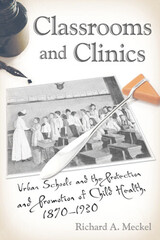
The authors of this volume emphasize that assessment, as it exists in schools today, consists mainly of the measurements that teachers themselves design, evaluate, and act upon every day. Improving the usefulness of assessment in schools primarily requires assisting and harnessing this flood of assessment information, both as a means of learning within the classroom and as the source of crucial information flowing out of classrooms.
This volume aims to encourage debate and reflection among educational researchers, professionals, and policymakers. Five source chapters describe successful classroom assessment models developed in partnership with teachers, while additional commentaries give a range of perspectives on the issues of classroom assessment, standardized testing, and accountability.

The teacher's role is utterly unique. Assigned at random to a group of children who think, learn, and interrelate in complex, subtle, and individual ways, he or she is expected to transmit specific educational material uniformly in a set amount of time. Appropriately, this book on classroom dynamics is also unique. By applying eclectic methodological strategies to the study of teacher–student interactions, it gets beyond the biases that underlie more traditional analyses of classroom life.
Carew and Lightfoot devise and implement diverse methods for describing, recording, and interpreting classroom processes, and then synthesize their findings for each of the four classrooms studied. Fascinating stories emerge of how the four teachers, each with limited resources of time, space, energy, and emotion, distribute their attention among their students. Over time, patterns develop. Some are patterns of positive discrimination, in which the teachers recognize and respond to individual children's needs; and others are patterns of negative discrimination, in which the teachers reveal particular biases on such grounds as race and sex. Consciously or not, the teachers display their individuality in terms of values, motivations, reasoning, and behavior.
The original and thorough approach of Beyond Bias reveals teachers in their many facets, from what makes them most effective to what leaves them most vulnerable. All professionals and researchers concerned with the educational process will find immense value in Carew and Lightfoot's careful analysis of what a teacher is and enlightened synthesis of what a teacher should be and can be.

Classrooms and Clinics is the first book-length assessment of the development of public school health policies from the late nineteenth century through the early years of the Great Depression. Richard A. Meckel examines the efforts of early twentieth-century child health care advocates and reformers to utilize urban schools to deliver health care services to socioeconomically disadvantaged and medically underserved children in the primary grades. Their goal, Meckel shows, was to improve the children’s health and thereby improve their academic performance.
Meckel situates these efforts within a larger late nineteenth- and early twentieth-century public discourse relating schools and schooling, especially in cities and towns, to child health. He describes and explains how that discourse and the school hygiene movement it inspired served as critical sites for the constructive negotiation of the nature and extent of the public school’s—and by extension the state’s—responsibility for protecting and promoting the physical and mental health of the children for whom it was providing a compulsory education.
Tracing the evolution of that negotiation through four overlapping stages, Meckel shows how, why, and by whom the health of schoolchildren was discursively constructed as a sociomedical problem and charts and explains the changes that construction underwent over time. He also connects the changes in problem construction to the design and implementation of various interventions and services and evaluates how that design and implementation were affected by the response of the civic, parental, professional, educational, public health, and social welfare groups that considered themselves stakeholders and took part in the discourse. And, most significantly, he examines the responses called forth by the question at the heart of the negotiations: what services are necessitated by the state’s and school’s taking responsibility for protecting and promoting the health and physical and mental development of schoolchildren. He concludes that the negotiations resulted both in the partial medicalization of American primary education and in the articulation and adoption of a school health policy that accepted the school’s responsibility for protecting and promoting the health of its students while largely limiting the services called for to the preventive and educational.

READERS
Browse our collection.
PUBLISHERS
See BiblioVault's publisher services.
STUDENT SERVICES
Files for college accessibility offices.
UChicago Accessibility Resources
home | accessibility | search | about | contact us
BiblioVault ® 2001 - 2024
The University of Chicago Press









